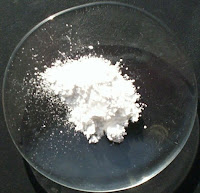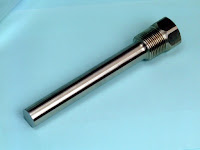A
temperature transmitter is generally described as a device, which on the input side is connected to some sort of temperature sensor and on the output side generates a signal that is amplified and modified in different ways. Normally the output signal is directly proportional to the measured temperature within a defined measurement range. Many additional features can be added depending on the type of transmitter being used. The features of the temperature transmitter are often described by using different terms with respect to technology, mounting method, functions, etc. The following list is a brief summary of these terms.
Analog Transmitters: These transmitters are designed on analog circuit technology. They normally offer basic functions such as temperature linearization and sensor break technology. Sometimes they are adjustable for different measuring ranges, often with a fast response time.
Digital Transmitters: This transmitter type is mainly based on a microprocessor. They are often called intelligent transmitters, because they normally offer many extra features, which are not possible to realize in analog transmitters.
In-Head Transmitters: These transmitters are designed for mounting in the connection heads of temperature sensors. All Duro-Sense in-head transmitters fit into DIN B heads or larger. Special care has to be devoted to the ruggedness because of the harsh conditions that sometimes exist.
DIN Rail Transmitters: DIN rail transmitters are designed to be snapped onto a DIN rail. Duro-Sense DIN rail transmitters fit on a 35mm rail according to DIN EN 50022.
RTD Transmitters: RTD transmitters are used only for RTD sensors. (Pt100, Pt1000, Ni100, etc.). Normally they can handle only one RTD type. Most Duro-Sense transmitters can handle more than one type of RTD and are either fix- ranged or adjustable. They all have linear output.
 Thermocouple Transmitters
Thermocouple Transmitters: Thermocouple transmitters measure a MV signal form the thermocouple and compensates for the temperature of the cold junction. The cold junction compensation is normally made by measuring the terminal temperature. Alternatively, some transmitters can be adjusted to compensate for an external fixed cold junction temperature. Pure thermocouple transmitters are often not temperature linearized due to the complicated unlinearity of the thermocouples.
Analog Output: The output signal is a current (4-20mA). Some transmitters are available with 0-20mA or 0-10mA output. The signal is normally proportional to the measured value within a defined measurement range.
Digital Output: The measured value (temperature) is presented as a binary coded message. So called Fieldbus transmitters use this technique. The Fieldbus transmitters on the market today use different standards for the communication thus creating some problems when integrating them with other instrumentation. Examples of standard available are: PROFIBUS, Interbus, Foundation Fieldbus, LonWorks and CAN-bus.
Analog and Digital Output: The HART transmitters have an analog output with a superimposed digital signal on the same wires. Typically, the analog signal is used for normal measurements and the digital signal only for temporary measurements, because of the low communication speed. The digital signal is mainly used for configuration and status information.
Isolated Transmitters: Isolated transmitters have no leading connections between circuits that are isolated from each other. The isolation effectively eliminates the risk for circulating currents and facilitates the connection of transmitters to control systems with grounded inputs.
Non-Isolated Transmitters: These transmitters have leading connections between, for instance, input and output circuits. They should be used with care.
For more information on temperature transmitters, visit
https://duro-sense.com or
call 310-533-6877.












